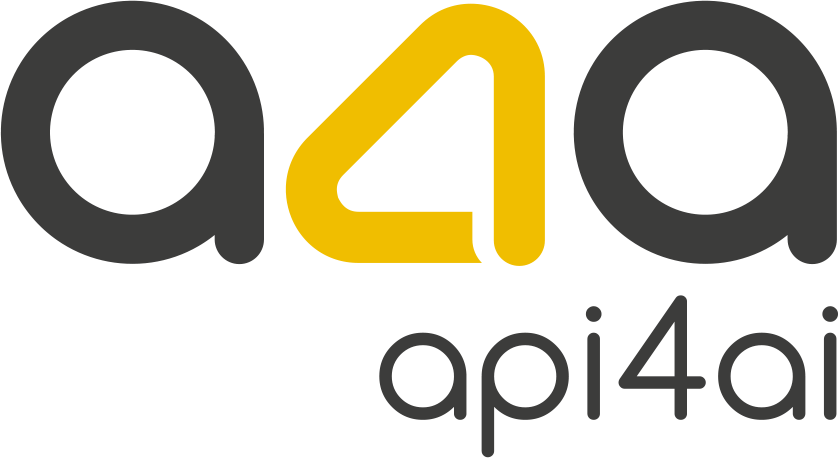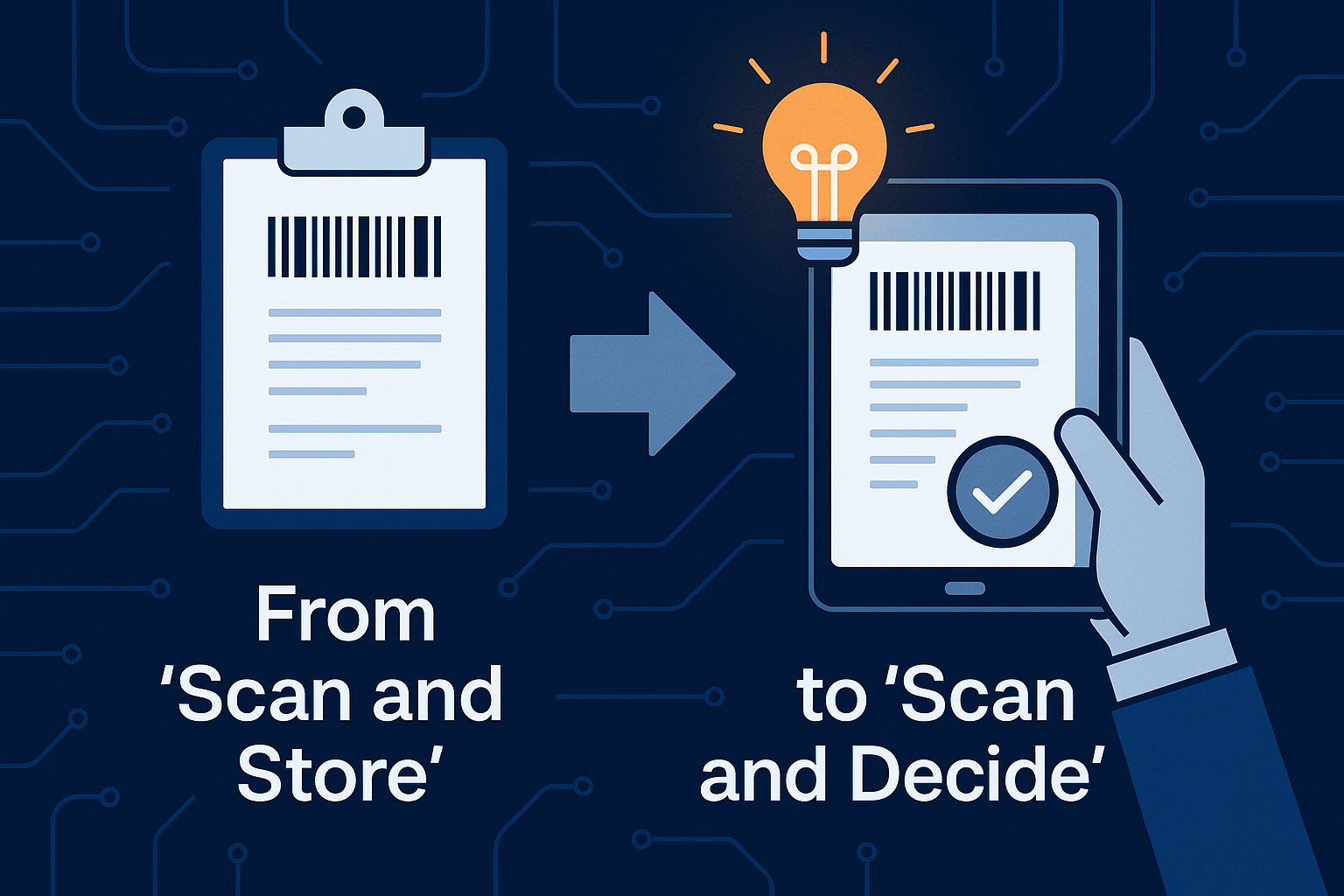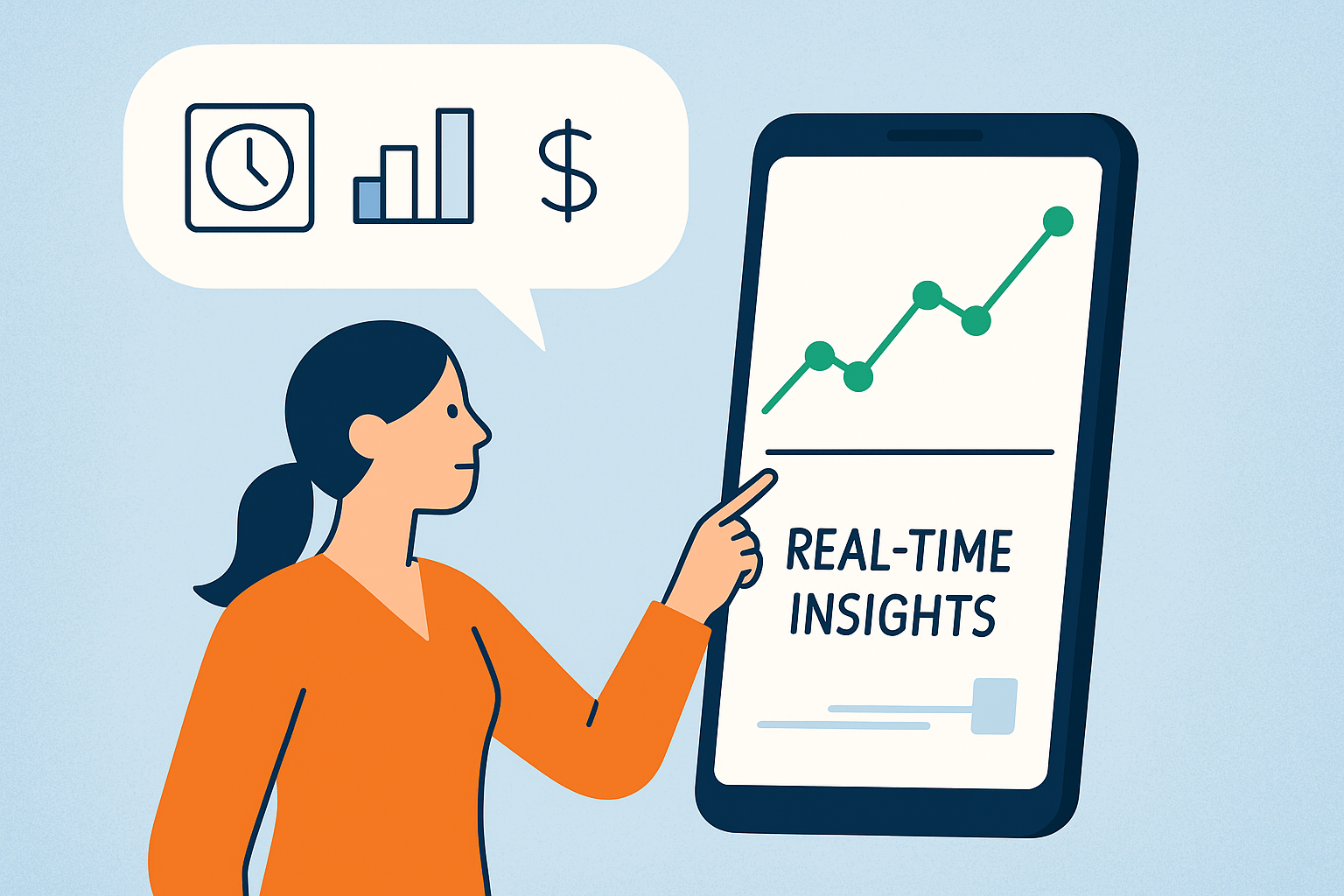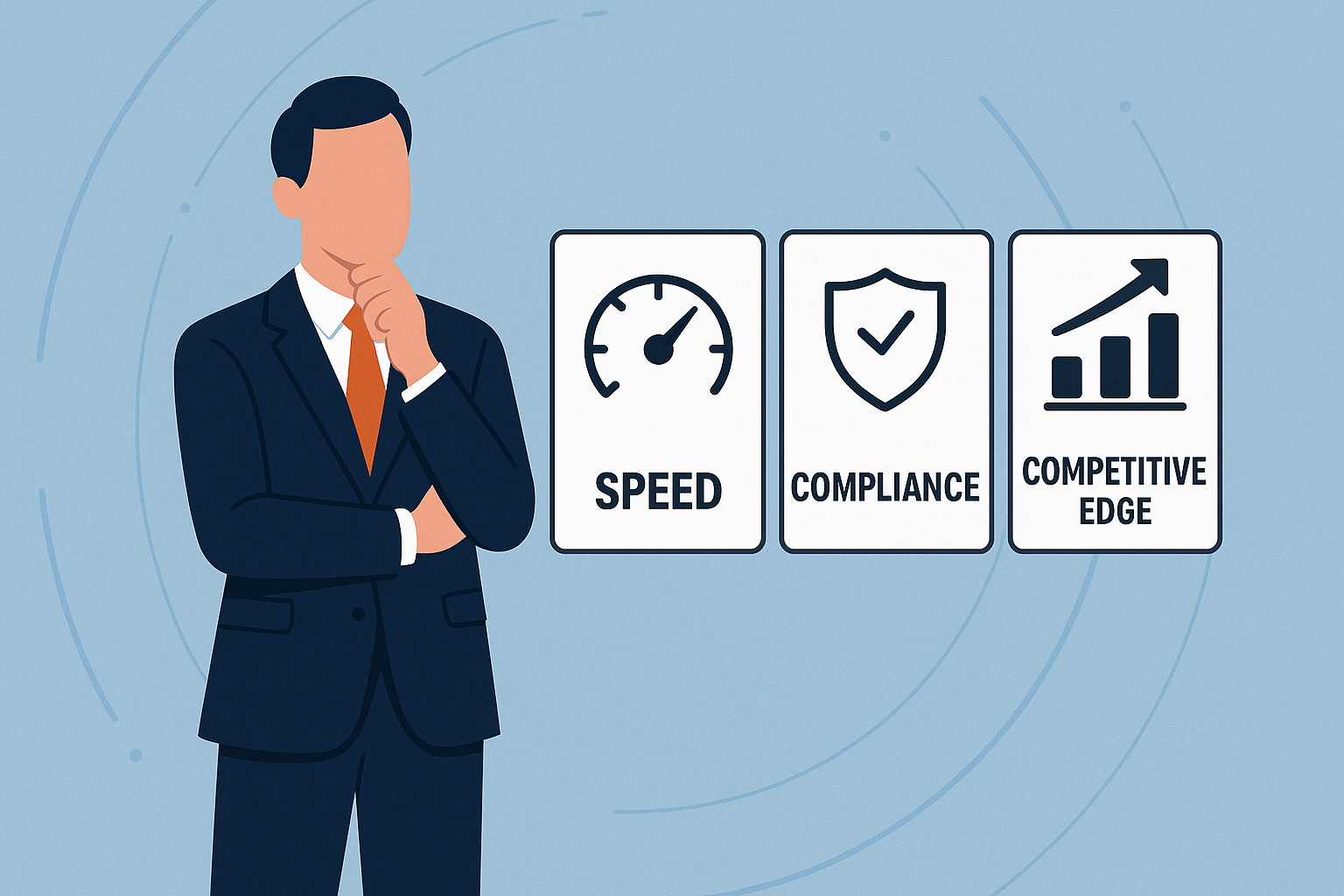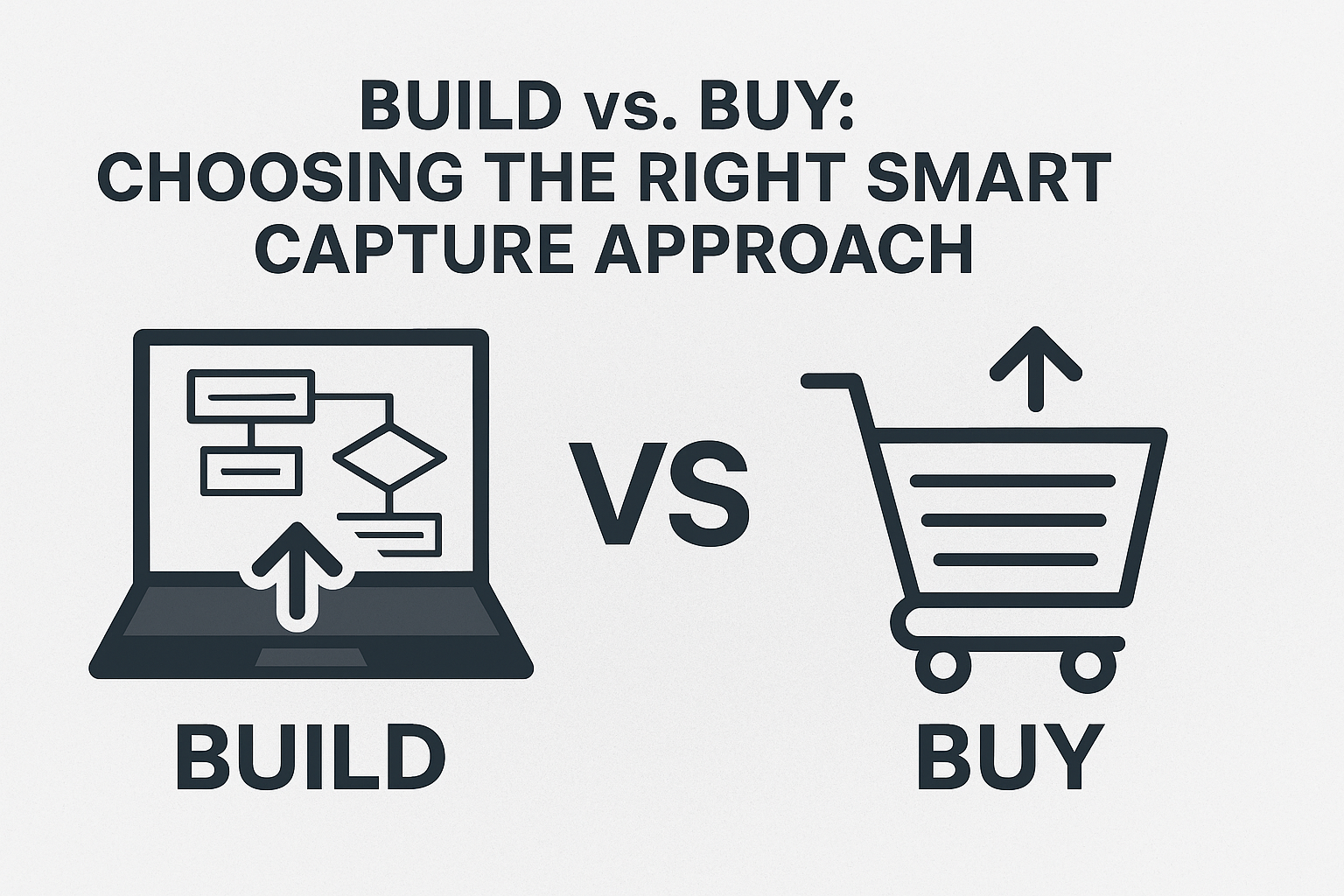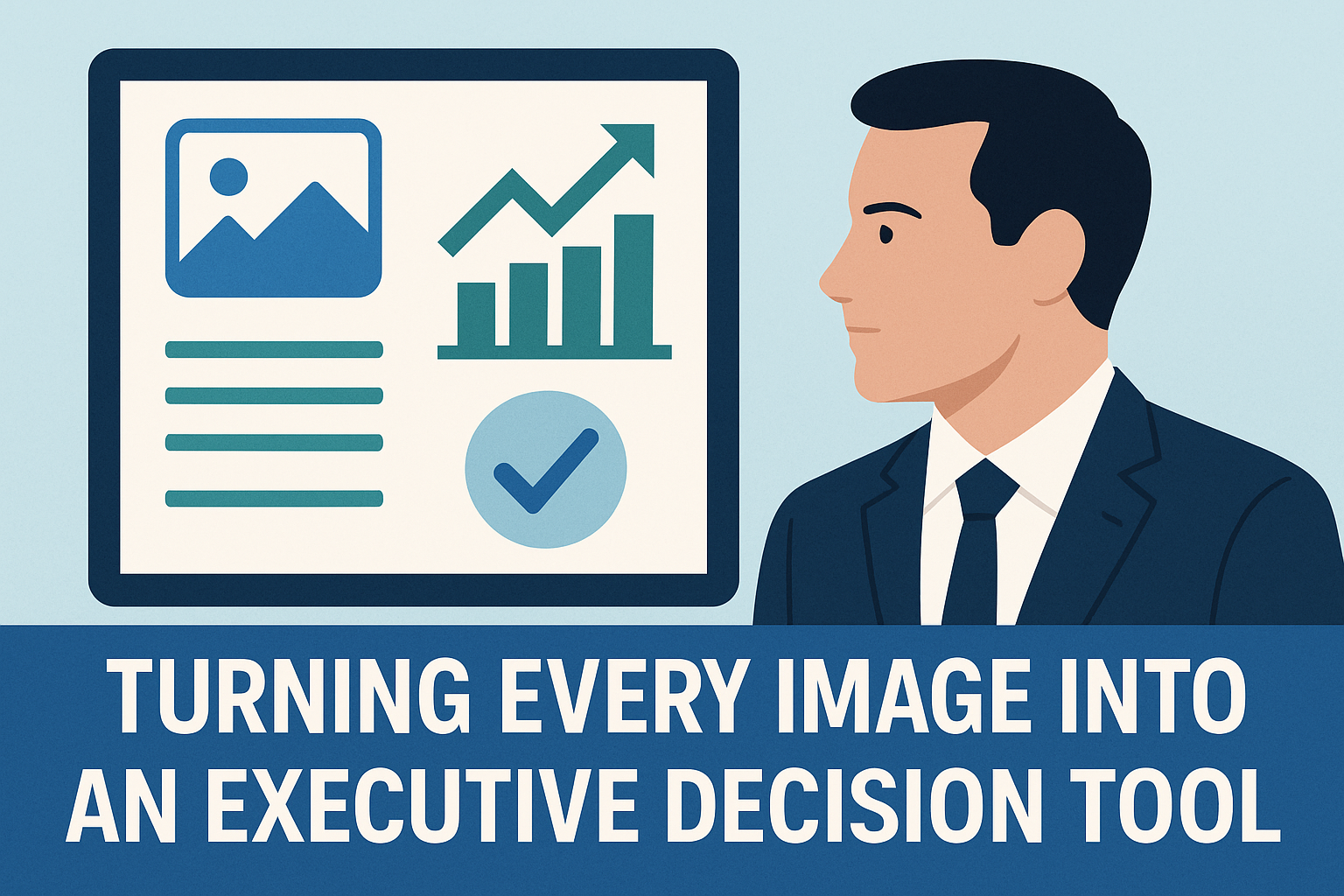Smart Data Capture: OCR That Thinks for You
Introduction: The Shift from Data Collection to Real-Time Decisions
For decades, organizations have relied on Optical Character Recognition (OCR) to convert printed text into digital form. While this was once groundbreaking, the traditional approach often reduced OCR to a “scan and store” function — extracting text from invoices, contracts, or shipping labels only to push it into a database for later use. In today’s fast-moving business landscape, that delay is no longer acceptable.
Enter Smart Data Capture — a new paradigm that blends OCR with barcodes, object detection, and real-time analytics. Instead of being just a digitization tool, OCR becomes part of a connected system that can interpret, validate, and act on data at the moment of capture. This is not simply about reading information; it is about transforming frontline interactions into immediate, informed decisions.
For executives, the implications are profound. Every business unit — whether logistics, healthcare, retail, or financial services — relies on data accuracy and speed. A misplaced digit in a delivery order, a delayed compliance check, or a missed opportunity to spot customer intent can translate directly into financial loss and reputational risk. Smart data capture closes this gap by linking the act of scanning with the act of deciding.
This shift aligns directly with broader digital transformation goals. It reduces operational lag, empowers staff with decision-ready data, and strengthens compliance without adding extra steps. The result is a faster, leaner, and more resilient organization — one where the frontline is equipped not just to record what happens, but to shape what happens next.
For C-suite leaders, the question is no longer “Do we digitize?” but rather “How do we enable digitization to think for us?” Smart data capture provides the strategic answer: by turning every scan into a source of actionable visibility, competitive agility, and measurable ROI.
From “Scan and Store” to “Scan and Decide”
Traditional OCR systems were built on a simple premise: capture text from a physical source and save it in digital form. For years, this was a major efficiency leap, replacing manual entry and reducing paper clutter. Yet the workflow often ended there. Data sat in databases, waiting for a human to retrieve, review, and decide. This created lag — not just in operations, but in the very decision-making processes that drive revenue, compliance, and customer satisfaction.
The new model of intelligent OCR eliminates that bottleneck. Instead of merely transcribing, today’s smart data capture technologies can:
Classify information automatically — distinguishing an invoice from a receipt, or a medical record from an insurance form.
Validate accuracy on the spot — cross-checking ID numbers, barcodes, or compliance fields as soon as data is captured.
Trigger next steps instantly — initiating a payment approval, flagging a compliance risk, or updating a logistics system without waiting for manual review.
For executives, this shift translates into a profound operational change. Workflows that once spanned hours or even days are compressed into seconds. Frontline employees no longer serve as data clerks; they become decision enablers, empowered by automation that thinks alongside them. The result is a seamless flow from capture to decision, reducing error rates and accelerating throughput across the enterprise.
This matters because speed is now a strategic differentiator. Whether approving a loan, clearing a shipment, or authorizing a purchase, the organizations that act fastest win. Intelligent OCR supports this by turning unstructured text into structured, actionable insight at the moment of interaction.
In essence, smart capture moves OCR from being a digitization tool to a decision engine. For leadership, it is not just an IT upgrade— it is an enabler of business agility, compliance integrity, and competitive edge.
Beyond Text: Multi-Modal Capture with Barcodes, Objects & Labels
While OCR remains central to data digitization, modern business demands more than text extraction alone. The most valuable insights often come from combining multiple signals in a single capture event — text, numbers, barcodes, labels, logos, and even objects within an image. This is where smart data capture moves from incremental efficiency to true transformation.
Consider logistics. A warehouse worker scans a parcel label. In a traditional system, only the printed address is digitized. With multi-modal capture, the system simultaneously reads the text, validates the shipping barcode, and identifies the product photo for condition or category. The result is an instant, 360-degree view of the shipment — far beyond what text alone can provide.
In healthcare, a nurse can capture a patient wristband, prescription details, and drug packaging in one scan. OCR extracts the text, barcode recognition confirms the medication, and object detection verifies the physical package. This reduces risk of error and accelerates treatment, while ensuring compliance with safety protocols.
Retail offers another powerful example. Smart capture allows shelf labels, brand logos, and pricing information to be processed together. Retailers gain real-time visibility into stock levels, competitor presence, and promotional compliance — critical insights for driving revenue and optimizing customer experience.
For executives, the significance is clear: multi-modal capture multiplies the value of every interaction. Instead of piecemeal data points scattered across systems, organizations gain unified, decision-ready information in real time. This not only improves accuracy and compliance but also enables predictive capabilities, such as forecasting demand or flagging risks before they escalate.
Technologies such as OCR APIs, object detection services, and barcode scanning tools are already enabling this shift. More advanced deployments combine them into seamless workflows that integrate directly with ERP, CRM, or compliance systems. The result is a single capture event powering an entire chain of business actions — a decisive advantage in industries where speed, accuracy, and visibility define success.
For leadership, the takeaway is that smart capture is no longer just about “reading” documents — it is about understanding the entire context of the image and leveraging it for instant, high-value decisions.
Real-Time Insights: Acting at the Moment of Capture
In the past, the path from data capture to decision was fragmented. A document or image was scanned, sent to storage, and later retrieved for manual review or batch processing. The result was lag — sometimes hours, sometimes days — between the moment information was collected and the moment it created value. In industries where speed defines competitiveness, that delay is no longer acceptable.
Real-time smart capture eliminates this gap. Instead of waiting for human intervention, the system analyzes data at the instant it is collected. Text, barcodes, and objects are not just digitized; they are validated, compared against business rules, and used to trigger immediate actions.
Consider the following scenarios:
Logistics: A package label is scanned, and the system instantly flags a mismatch between the barcode and the manifest, preventing costly misrouting.
Banking: An ID document is captured at a branch, and compliance checks are run in real time, ensuring regulatory alignment before a transaction proceeds.
Retail: Shelf tags are scanned by staff or even cameras, and pricing discrepancies are flagged on the spot, avoiding lost sales or compliance penalties.
For executives, the impact extends far beyond operational convenience. Real-time capture shrinks the decision cyclefrom hours to seconds. It enables proactive responses — catching risks before they escalate, and capturing opportunities before competitors can act. The organization no longer reacts to yesterday’s data; it operates on live intelligence.
From a strategic perspective, this also enhances resilience. In a volatile business environment, the ability to detect issues and act immediately provides a layer of agility that spreadsheets and delayed reports cannot match. Whether it’s regulatory compliance, customer satisfaction, or supply chain integrity, real-time visibility translates directly into reduced costs, reduced risk, and stronger ROI.
The takeaway for C-suite leaders is clear: smart data capture is not simply about automation — it is about enabling a new tempo of business, where every scan is an opportunity to act instantly, accurately, and decisively.
The Strategic Value: Speed, Compliance & Competitive Edge
For senior leaders, the value of any new technology must be measured not only in technical efficiency but also in its ability to advance core business priorities. Smart data capture delivers on this front by directly supporting three areas that dominate boardroom discussions: speed, compliance, and competitive advantage.
1. Speed as a Differentiator
In every industry, time is money. Approving a loan application, clearing a shipment at customs, or processing a customer return — each of these relies on information being captured and verified accurately. Traditional processes often introduce delays through manual checks or siloed systems. Smart data capture compresses these cycles from hours into seconds. Faster operations lead to shorter customer wait times, accelerated revenue recognition, and greater capacity without expanding headcount.
2. Compliance Without Bottlenecks
Regulation is no longer confined to finance or healthcare; it affects virtually every sector. The challenge for executives is ensuring compliance without slowing down operations. Smart capture technologies provide built-in validation at the point of entry. IDs can be cross-checked, invoices validated, and sensitive data anonymized instantly. This prevents compliance breaches from ever entering the system, reducing both regulatory exposure and the cost of remediation.
3. Competitive Edge Through Actionable Visibility
Markets reward companies that can see and act faster than their competitors. With multi-modal capture — OCR, barcodes, object and logo detection — organizations gain a richer, real-time view of their environment. A logistics firm can identify delays before they cascade through the supply chain. A retailer can monitor competitor shelf space in near real time. A bank can detect anomalies before they become risks. The strategic benefit is not just automation but insight at the speed of business.
For the C-suite, these outcomes align directly with long-term growth and resilience. Smart data capture reduces cost by minimizing manual intervention, protects reputation by ensuring compliance, and drives revenue by enabling organizations to act with greater agility than their peers.
The message is clear: in a world where customers expect immediacy and regulators demand precision, smart capture is no longer a back-office function — it is a boardroom-level capability, central to achieving sustainable competitive advantage.
Build vs. Buy: Choosing the Right Smart Capture Approach
When executives evaluate smart data capture, one of the most strategic questions arises: should the organization build its own tailored solution or leverage ready-to-use APIs available in the market? The answer is not binary. Both paths carry benefits and risks, and the right approach depends on the organization’s scale, priorities, and long-term vision.
The Case for Off-the-Shelf APIs
Cloud-based APIs for OCR, barcode scanning, image labeling, and object detection are designed for rapid integration. They allow organizations to experiment quickly, prove business value, and deploy smart capture without large upfront investment. This approach is particularly attractive when processes are standardized — such as digitizing invoices, scanning receipts, or validating identity documents. Speed to market is the main advantage, giving executives immediate ROI without long development cycles.
The Case for Custom Development
For enterprises with unique workflows, regulatory requirements, or highly specialized data, custom AI development can deliver a defensible advantage. A tailored solution can be trained on domain-specific data, integrated deeply with existing systems, and adapted to evolving requirements. While initial investment is higher, the long-term payoff comes in the form of reduced operational costs, greater accuracy, and differentiation that competitors cannot easily replicate.
The Strategic Middle Ground
In practice, many organizations adopt a hybrid approach: start with ready-to-go APIs to capture immediate wins, then extend capabilities with custom development once value has been proven. For example, an enterprise might deploy an OCR API to digitize documents today, then commission a bespoke solution that integrates OCR with brand recognition and anonymization for compliance in highly regulated industries. This staged strategy minimizes risk while ensuring scalability.
Executive Considerations
Time horizon: If speed is critical, APIs provide quick deployment. If sustainability and defensibility are priorities, custom development becomes more attractive.
Cost structure: APIs shift costs to a subscription model, while custom development requires upfront capital but lowers long-term per-transaction cost.
Competitive strategy: Off-the-shelf tools level the playing field, but custom AI offers differentiation.
For decision-makers, the build-vs-buy debate should be framed not as a technical IT choice but as a business strategy question: How much of your competitive edge should depend on widely available tools, and how much should be secured through proprietary capabilities? The organizations that balance immediate efficiency with long-term uniqueness will extract the greatest value from smart data capture.
Conclusion: Turning Every Image into an Executive Decision Tool
The journey from traditional OCR to smart data capture reflects a broader truth about digital transformation: technology is no longer just about recording information — it is about enabling organizations to act faster, smarter, and with greater confidence.
What began as a way to extract text from paper has now become a strategic engine for decision-making. By combining OCR with barcodes, object detection, and real-time validation, organizations are creating workflows where data does not sit idle in databases — it triggers actions the moment it is captured. This shift turns every image, every label, and every document into an opportunity to drive efficiency, ensure compliance, and strengthen competitive advantage.
For executives, the implications are clear:
Agility: Smart capture compresses decision cycles from hours to seconds, allowing the business to respond to customers, regulators, and markets in real time.
Risk Reduction: Automated validation at the point of entry ensures compliance, minimizes errors, and safeguards reputation.
Profitability: By reducing manual effort and accelerating throughput, organizations unlock cost savings while freeing staff to focus on higher-value tasks.
Strategic Edge: With richer, multi-modal data feeding directly into core systems, leaders gain the visibility needed to anticipate challenges and capitalize on opportunities before competitors.
The choice facing today’s leadership is not whether to digitize — most organizations already have. The real question is whether digitization will remain a passive process, or whether it will be harnessed as an active intelligence layer that drives the business forward.
Smart data capture provides that intelligence layer. It is OCR that does more than recognize text; it thinks, validates, and acts. It empowers the frontline to make informed decisions instantly and equips the boardroom with the real-time visibility required to navigate an increasingly dynamic business landscape.
In an era defined by speed and complexity, the organizations that succeed will be those that treat every scan as more than data entry — they will treat it as a decision point. Those who adopt smart capture now will not only gain operational efficiency today but also secure resilience, compliance, and growth for tomorrow.
